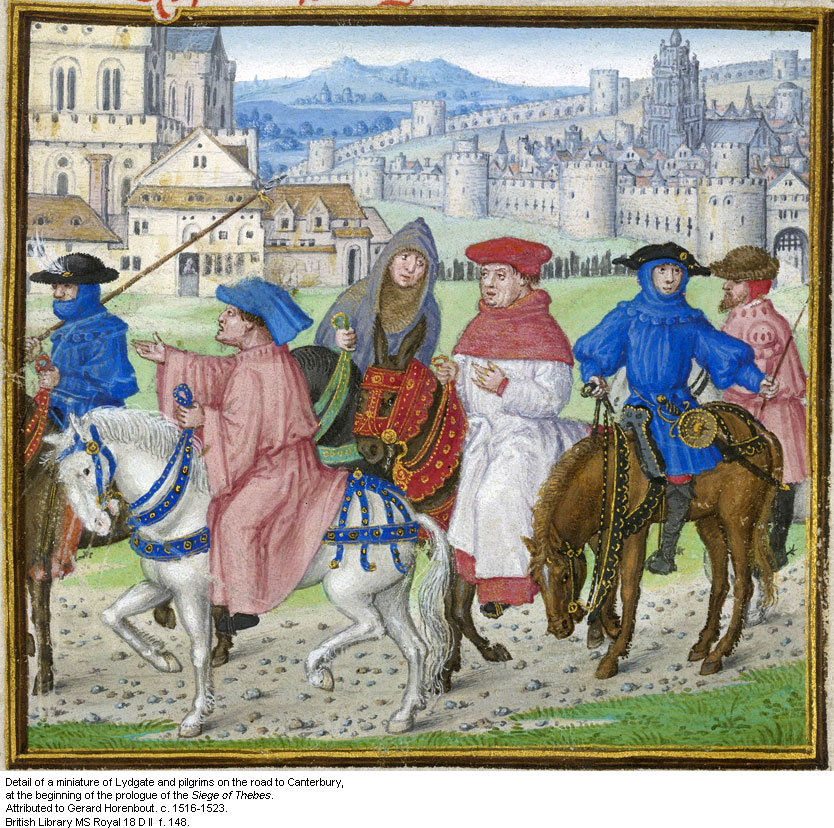
Paul Strohm (2014), in Chaucer’s Tale: 1386 and the Road to Canterbury, identifies the cultivation of, and through performance direct engagement with, an audience, as vital to the practice and status of the medieval poet. In moving from London to Kent, Chaucer lost his audience, albeit intimate and small in number. His solution, in Strohm’s account, was novel and transformative. In the Canterbury Tales, Chaucer created his own audience for his writing within the text itself, by making the thirty pilgrims an audience for, and commentators on, each other’s stories. The pilgrims come from different walks of life, and the stories differ in form and content. In seeking a form of direct address to mobilise his narrative, Chaucer’s artistic breakthrough is, according to Strohm, to create ‘a body of ambitiously mixed participants suitable for a collection of tales unprecedented in their variety and scope … a portable audience’ (227) enabling Chaucer to produce a work of art that places itself ‘beyond the vagaries of time and circumstance’ (228). ‘The idea starts with a mixed company of Pilgrim tale-tellers. From this mixed company issues the form of the work: It will be serial, multivoiced, stylistically mixed, many-themed, and contentious’ (228).
I’m reflecting on this as I plan the protocols for working with different groups on my micro-projects. It prompts me to consider the extent to which diversity both within and between groups can be reflected in the forms of visual outcomes. Chaucer’s literary strategy provides a way of managing this diversity, in constituting each group as both producers and an audience for, and interlocutors with, what is produced. This allows the space, in each group, to produce diverse forms of constituent images and collective outcomes, and makes the fieldwork a generative enterprise. The outcomes will be ‘multivoiced, stylistically mixed, many-themed’ and are likely to be ‘contentious’ (particularly where the perceptions and experiences of individuals and groups lie in opposition to, or diverge from, those of, for instance, the local authority and developers). The work produced is thus presented to an audience in the process of production, and potentially transformed. It is formalised in the creation of a pop-up exhibition, with the prospect of enlarging the audience. The outcomes are unlikely to be serial, in the sense of a manuscript of Chaucer’s work, unless the constituent projects are presented, in part or whole, as books or other linear forms (which presents another dimension of challenge).
Thinking of the groups and the work produced in these terms strengthens the collaborative nature of the process, and allows the meaningful production of a range of forms of image. It also reinforces the poetic/lyrical nature of the project (rather than the third party construction and mediation of narratives).
Related posts
References
Paul Strohm (2014), Chaucer’s Tale: 1386 and the Road to Canterbury, New York: Viking.
